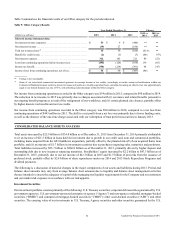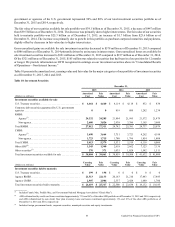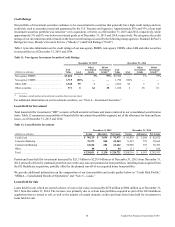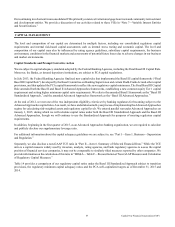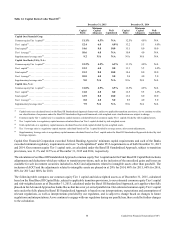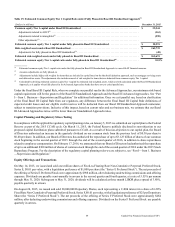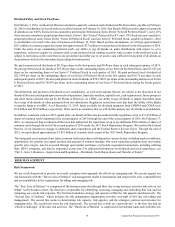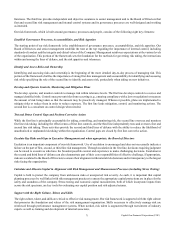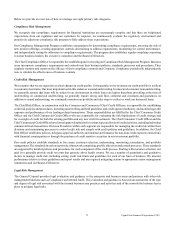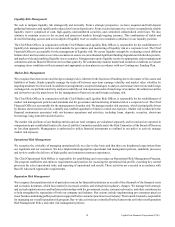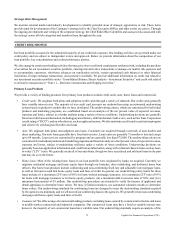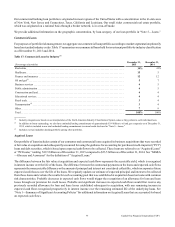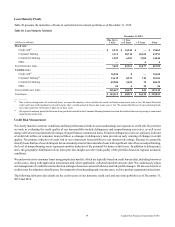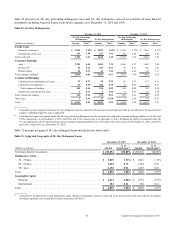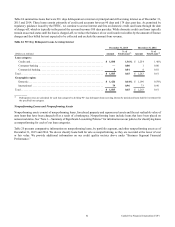Capital One 2015 Annual Report Download - page 91
Download and view the complete annual report
Please find page 91 of the 2015 Capital One annual report below. You can navigate through the pages in the report by either clicking on the pages listed below, or by using the keyword search tool below to find specific information within the annual report.72 Capital One Financial Corporation (COF)
Enabled by the Right Data, Infrastructure, and Programs
Data, infrastructure, and programs are key enablers of our risk management processes and practices. These core requirements
enable effective risk modeling, efficient first, second, and third line risk activity performance, and cross-line interaction. In addition,
effective program design of each risk category is regularly assessed to ensure risk practices continue to evolve with leading industry
practices, and continue to interact across categories as desired for a strong overall risk management program.
Risk Appetite
Risk appetite refers to the level of risk our business is willing to take in pursuit of our corporate business objectives. The Board
of Directors approves our risk appetite including specific risk limits where applicable. While first line executives manage risk on
a day-to-day basis, the Chief Risk Officer provides effective challenge and independent oversight to ensure that risks are within
the appetite and specific limits established by the Board of Directors. The Chief Risk Officer reports to the Board of Directors
regularly on the nature and level of risk across all eight risk categories. In addition to his broader management responsibilities,
our Chief Executive Officer is responsible for developing the strategy and mission of our organization, determining and leading
our culture, and reviewing and providing input into our risk appetite.
We have a defined risk appetite for each of our eight risk categories that is approved by our Board of Directors. Stated risk appetites
define the parameters for taking and accepting risks and are used by management and our Board of Directors to make business
decisions. We communicate risk appetite statements, limits and thresholds to the appropriate levels in the organization and monitor
adherence.
Risk Categories
We apply our risk framework to protect our company from the eight major categories of risk that we are exposed to through our
business activities. Our eight major categories of risk are:
• Compliance Risk: Compliance risk is the risk to current or anticipated earnings or capital arising from violations of laws,
rules, or regulations. Compliance risk can also arise from nonconformance with prescribed practices, internal policies
and procedures, contractual obligations, or ethical standards that reinforce those laws, rules, or regulations;
• Credit Risk: Credit risk is the risk of loss from an obligor’s failure to meet the terms of any contract or otherwise fail to
perform as agreed;
• Legal Risk: Legal risk is the risk of material adverse impact due to: new and changed laws and regulations; interpretations
of law; drafting, interpretation and enforceability of contracts; adverse decisions/consequences arising from litigation or
regulatory scrutiny; the establishment, management and governance of our legal entity structure; and the failure to seek/
follow appropriate Legal counsel when needed;
• Liquidity Risk: Liquidity risk is the risk that the Company will not be able to meet its future financial obligations as they
come due, or invest in future asset growth because of an inability to obtain funds at a reasonable price within a reasonable
time period;
• Market Risk: Market risk is the risk that an institution’s earnings or the economic value of equity could be adversely
impacted by changes in interest rates, foreign exchange rates, or other market factors;
• Operational Risk: Operational risk is the risk of loss, capital impairment, adverse customer experience, or reputational
impact resulting from failure to comply with policies and procedures, failed internal processes or systems, or from external
events;
• Reputation Risk: Reputation risk is the risk to market value, recruitment and retention of talented associates and
maintenance of a loyal customer base due to the negative perceptions of our internal and external constituents regarding
our business strategies and activities; and
• Strategic Risk: Strategic risk is the risk of a material impact on current or anticipated earnings, capital, franchise or
enterprise value arising from: (i) the Company’s competitive and market position and evolving forces in the industry that
can affect that position; (ii) lack of responsiveness to these conditions; (iii) strategic decisions to change the Company’s
scale, market position or operating model; or (iv) failure to appropriately consider implementation risks inherent in the
Company’s strategy.


